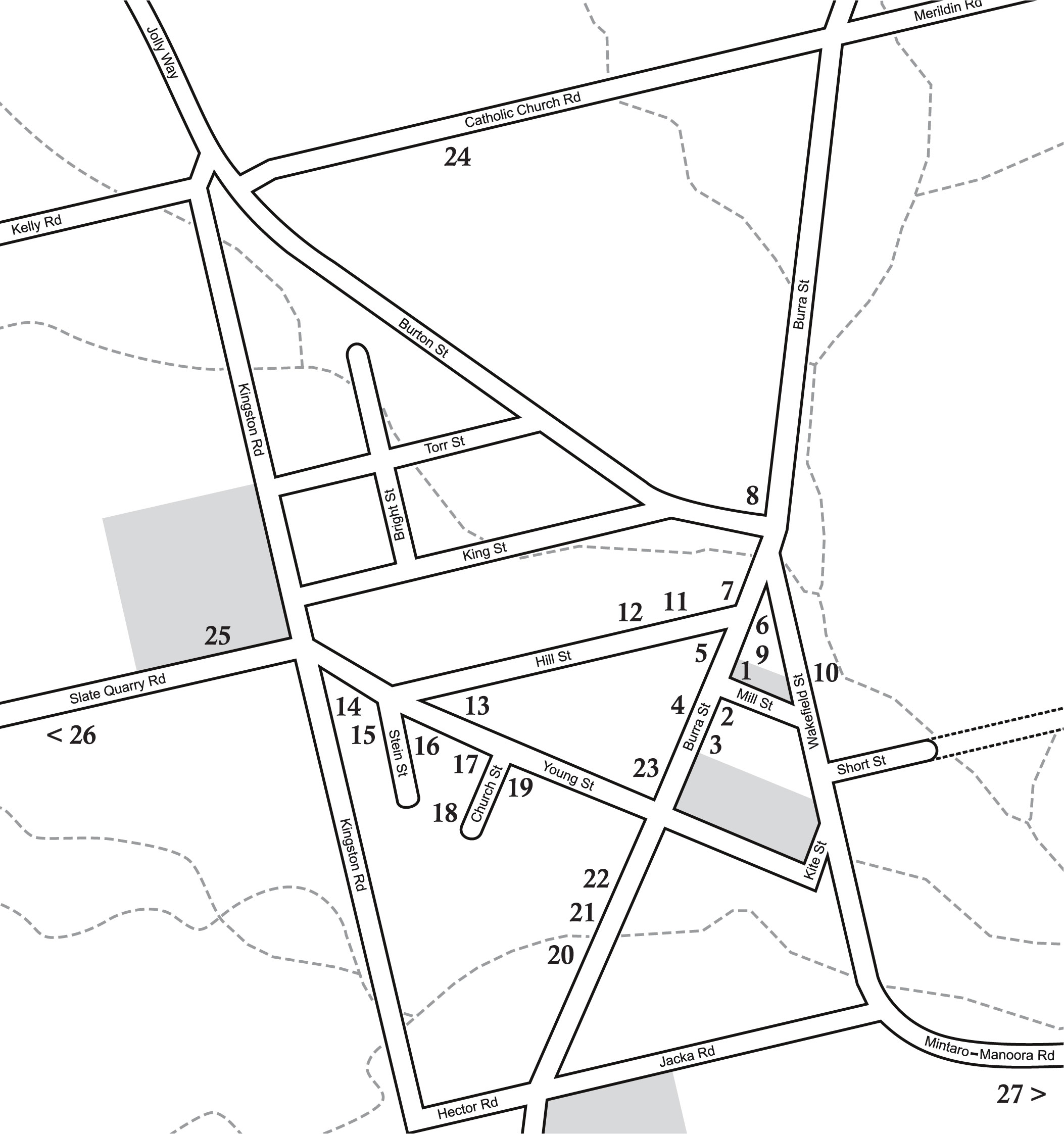Historic Mintaro Self-guided Walking Tour
Discover the charm and beauty of Mintaro’s historic buildings and other places of significance with a self-guided walking tour of the town.
Download map here
A location map and details of places on the tour are also listed below. Many of the properties are privately owned Please respect the privacy of residents and bed & breakfast accommodation house guests. Do not enter properties uninvited.
1 INSTITUTE and FORMER COUNCIL CHAMBERS
Built in 1878, the Institute has been the centre of the town’s social and cultural activity ever since. In 1942 the council chambers and institute were linked. This now one building was extensively renovated as a Bi-centennial Project in 1988.
2 MINTARO POST OFFICE
The most recent of Mintaro’s colonial buildings, this government building passed to private contract in 1930 and remains a postal agency today.
3 DEVONSHIRE HOTEL and STABLES
Mintaro’s second hotel provided a huge room for meetings and dancing, with the long cellars used as a skittle alley and shooting gallery. It was de-licenced in 1898 and became a temperance hostel.
4 CENTRAL BUSINESS COMPLEX
These shops with attic accommodation for storeowners were built in the 1850’s to service Mintaro’s commercial needs. Over time they have housed a saddler, bootmaker, blacksmith, fodder store, butcher, bank and stock agent.
5 GENERAL STORE
This building was a General Store until the 1980’s. It then became an outlet for antiques and collectables until 2015.
6 MAGPIE AND STUMP HOTEL
The hotel originally opened as the Mintaro Hotel in 1850 and Mathew Muir was the first licensee. It has only been known as the Magpie and Stump for a relatively short period, between 1851–53 and from 1976 to the present. It was called the Mintaro Hotel in the intervening years.
7 REILLY’S BOOT SHOP
Hugh Reilly conducted a cobbler’s business in the 1850’s, servicing the copper carting industry on the Gulf Road.
8 FORMER POLICE STATION and LOCK UP
Constructed in slate in 1867 by the Colonial Architect’s Office, this building is a sophisticated example of a police station for the period. It comprises the main building, attached walled exercise yard and cell block. Its elevated position and grand slate staircase form an imposing access on Burra Street.
9 FLOUR MILL
This 1850’s steam driven flour mill is a tangible reminder of Mintaro’s role as an early agricultural supply centre. Sadly the high free standing chimney was largely demolished to prevent local children from climbing up its inside.
10 WAKEFIELD COTTAGE
An example of a simple 1850’s cottage of slate and rubble. Now sensitively renovated and extended to provide a modern dwelling.
11 PRIEST’S FORMER HOUSE and PAY OFFICE
These two buildings, which are fine examples of slate construction, were originally built by Thompson Priest, who managed the Mintaro Slate Quarry from the mid-1850s to the 1880s. The Paymaster’s office is identical to the Site Office at the Slate Quarry.
12 LILAC COTTAGE
A simple stone hut occupied by slate cutter Jimmy Ryan, a quarry labourer all his life. The lean of the addition has been so for as long as living memory.
13 ST PETER’S ANGLICAN CHURCH
Originally a Primitive Methodist Chapel, it was purchased by the Anglican community , in 1904, with significant financial support from the Mortlock family.
14 WESLEYAN METHODIST CHURCH GROUP
The Wesleyan chapel was the regional parish church dominating religious life. The larger gothic style church was Australia’s first United Methodist Church.
15 WESLEYAN MANSE
Parish residence and continued to be the home of Mintaro’s minister. The Victorian wing was added in 1891 when the congregation increased.
16 ORIGINAL SCHOOL and COTTAGE
This building was used as a licensed school by James Fry from 1853 until 1872, when he was appointed the first Headmaster of the newly built Mintaro Primary School.
17 ANGLICAN SCHOOL ROOM
The Church of England purchased the allotment in 1856 and this small building, with its gothic windows, was probably built shortly after. James Fry purchased the property in 1876.
18 MINTARO PRIMARY SCHOOL
Constructed in 1872, the school operated continuously until permanently closed in 2006. Enrolments peaked at 106 in 1923. In 1922 a separate teacher’s residence was built and the school’s residential section was converted to classrooms.
19 MILLER’S HOUSE
This house typifies an early domestic dwelling which evolved through a number of stages in construction. Its most distinctive feature is the unusual, almost pyramidal roof on the northern wing which replaced the original timber shingle hipped roof.
20 BLACKSMITH’S SHOP
William Rowe operated “a smithy” from 1858 until the 1890’s. He was renowned for producing quality farm implements and competed successfully in many district ploughing competitions.
21 WILLIAM HUNT’S BARN
Once the workshop for carpenter William Hunt, the building is now sensitively renovated. For many years, a long “saw pit” in the forecourt existed for sawing logs lengthwise into planks.
22 JOLLY HOUSE
The original home of carpenter and undertaker Henry Jolly. All his children excelled in professional life; his son Norman being SA’s first Rhodes Scholar.
23 HOUSE, STORE and CARPENTER’S SHOP
This complex was built by the late 1850’s and has been a carpenter’s business, incorporating undertaking, telegraph station (opened 1873), post office and general store.
FURTHER AFIELD…
24 CATHOLIC CHURCH and CEMETERY
The Church of the Immaculate Conception was the first Jesuit Church in Australia, built in 1856. A Josephite Convent, now demolished, stood to the west of the church and the Sisters conducted a school in the church vestry until 1957.
25 MINTARO PUBLIC CEMETERY
Set behind an olive hedge 1 km west of the town centre, the cemetery contains the earliest formal graves of settlers in the district. Headstones of both marble and slate can be seen, the earliest dating from 1858.
26 MINTARO SLATE QUARRY
This world-famous quarry has operated continuously since slate was first extracted in 1856 by settler Thomson Priest. The quarry has been a major employer of labour from the district since its inception.
27 MARTINDALE HALL
Built by the Bowman family commencing in 1879, the Hall was sold to the Mortlock family in 1891. The Mortlock family were significant benefactors of Mintaro and South Australia.

